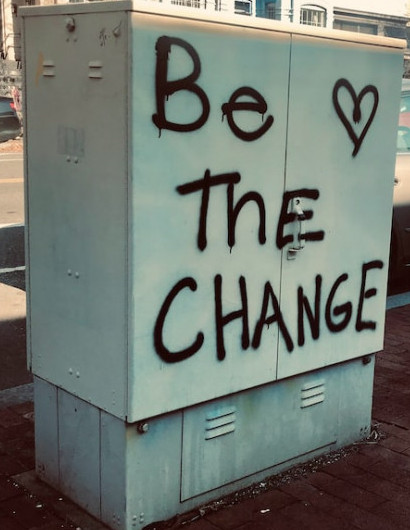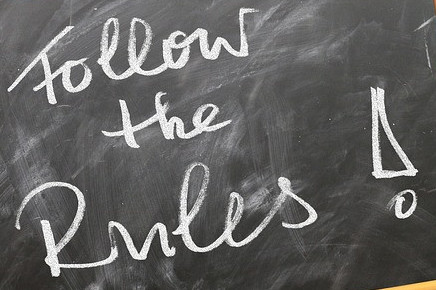What is conjugation and why do I need to know how to conjugate the verb be in English? It’s because you need to if you want to understand the language.
Perhaps you believe you already know English. Perhaps you don’t. Either way, it’s imperative that you are able to perform this basic function as it is extremely prevalent in everyday reading, writing, and speaking.
[animated-words-rotator id=”1″]
In this lesson, I will explain and demonstrate how to change the words to fit what you are trying to say.
There are three tenses:
- Present (now)
- Past (already happened)
- Future (hasn’t happened yet)
This lesson will deal with the present tense.
What Does Conjugate Mean?

In short, conjugation is the changing and pairing words so that they are gramatically correct.
For example, it is gramatically correct to say, I am writing this sentence.
In a negative statement, we use the word not to make it negative.
For example, I am not writing this sentence.
It is not right to say, me am writing this sentence, or me is writing this sentence.
Silly as it sounds if you say it, for someone who is learning this crazy language, especially if they are advanced in age, it is probably confusing why one is correct while the others are not.
In essence, the sentences mean the same thing but, like anything else, there’s a right way and a wrong way to do things.
I can only wonder if you already know that the words am, is, and are, are all variations of the verb be.
I am an English teacher and I was an adult before I knew it.
What Does The Word Be Mean?
According to Dictionary.com, it is defined as:
1. to exist or live
2. to take place; happen; occur
Keep in mind, when something is in a state of being, there is no action. It simply is what it is.
As simple as it seems to those of whose first language is English, for those of you whose first language is not English, it can be and often is very confusing how when we mean be, we use so many variations of the word. Some ESL students say it’s not only confusing but dizzying.
Add to the fact that there are three tenses and it’s even more confusing.
How And Why Do We Change Be?

To answer the second part of the question first, I don’t know why we change it.
However, can you imagine if we didn’t change it? For example, instead of saying, I am writing this sentence, what if we said, I be writing this sentence?
It would sound silly, wouldn’t it?
On the other hand, if you think about it, if we’d have learned to simply use the word be instead of all the variations, maybe it wouldn’t sound so strange after all.
In fact, I’ve actually heard so called English speakers speak the wrong way, such as the example I provided above.
So, rather than belabor the point, let’s look at how to do it correctly.
The word I is a personal pronoun that refers to oneself. It is often, if not usually used as a subject in a complete sentence. The proper way to use the verb be when it follows I, assuming I is not paired with any other subjects, is always am.
In other words, it is correct to say I am listening to music, but it is not proper to say he and I am listening to music.

The words he, she, and it are pronouns that refer to a male, a female, and a thing respectively. When any of those words is used as a subject without being paired with another subject, we use the word is.
For example, he is cold, she is cold, or it is cold.
On a side note, if a person’s name or any noun is used solely without being paired with any other prounoun or noun, we also use is. For example, Bob is old, Kathy is old, or English is old.
The other variation is when a noun and/or pronoun is paired with another noun or pronoun, we use are.
For example, Bob, Kathy and English are old.
Furthermore, the word we is a pronoun that describes something or someone else and ourselves. The word they is a word that describes more than one other person, place, or thing that does not include us. The word you, is a word that describes the person being spoken to or written to.
Whenever we, they, or you are used, we use are.
For example, we are people, they are dogs, or you are what you are.
Got it?
Good.
What Are Exceptions To The Rule?

Although English is notorious for all its exceptions to all its rules, to the best of my knowledge, there are not any exceptions to how and when to use am, is, and are.
However, there is one exception as to when and where you can use the word be instead of the word are when it follows you. It is when giving a direct command. Perhaps you’ve given it yourself.
For example, you be careful, you be quiet, or you be nice.
Of course, there are other variations that depend on other words that are used with the examples I’ve provided.
When the infinitive to is used in a sentence, we often use be after it.
For example, To be rich is a dream, I want to be rich, she wants to be famous, or it wants to be fed.
I Am Almost Finished

The verb be, a small word, that with all its variations is a key to learning and understanding English. Once you know how to conjugate the verb be, you are well on your way to building a foundation from which to build your grasp of this language.
This lesson deals solely with the present tense of this tiny but vitally important verb.
I will do a subsequent lesson about the past and future tenses of the verb.
Check back often for more lessons.
Leave comments or questions in the space below and I will promptly respond to them.


Hi KBob,
Thank you for sharing this informative lesson on conjugating the verb “be” in English. I appreciate your personable approach and the way you explain the topic clearly. It’s true that understanding conjugation is crucial for comprehending the language.
I found it interesting that you mentioned how confusing it can be for non-native English speakers to grasp the various forms of “be.” It’s a challenge indeed, especially with three tenses and multiple variations. Your examples and explanations help simplify the concept.
I have a question for you: In your experience as an English teacher, what are some common difficulties that students face when learning to conjugate the verb “be”?
Lou
Hi Lou, thanks for your comments. Yes, conjugation is crucial. I know for me and the little bit of Spanish I know, it’s because after years of learning it piecemeal, I finally learned how to conjugate verbs.
As for your question about common difficulties,it really depends on what a student’s first language is. Spanish speaking students have a tough time with the vowels, espeically a, e, and i. They pronounce a as ah, e as ay, and i as ee in Spanish.
Also Spanish speaking students have a hard time with English words that begin with multiple consonants such as st and str. They invariably want to put the letter e in front of those words because in Spanish that’s what they do.
Chinese students have difficulty with many of the letters’ pronunciation. For example, in Chinese, the letter x is pronounced like the letters sh.
Feel free to leave questions and comments anytime. I will promptly respond.
KBob